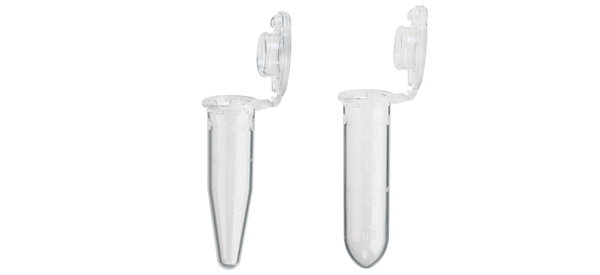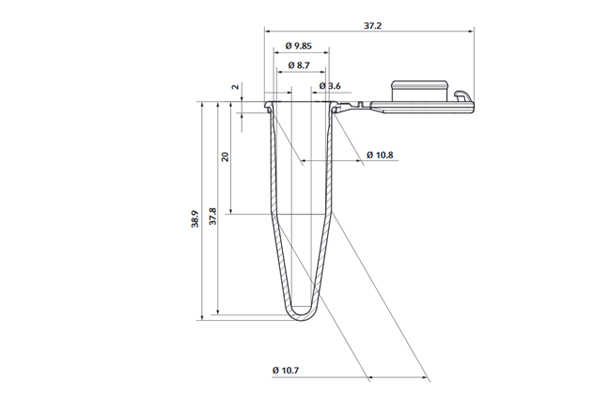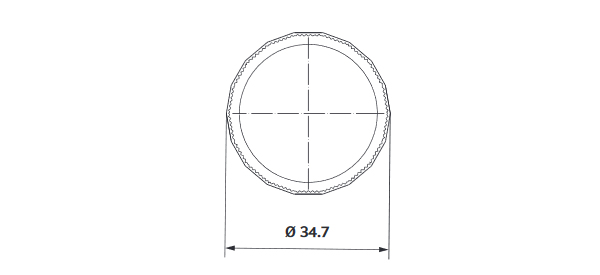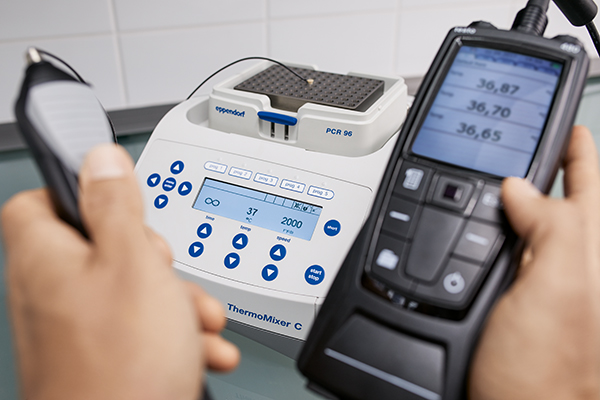This product is available in: 🇸🇪, 🇳🇴, 🇩🇰.
Call 042-300 91 30 or email info@labteamet.com
Temperature control within a sample is not as easy as expected. Most samples with the biomedical research area are sterile or at least as clean as possible. How can you monitor the temperature within your sample while avoiding contamination within your sample?
Image source: Boxyray/shutterstock.com
Many samples need to be warmed up or cooled down during their processing in the lab. The exact temperature is important for the correct processing of the samples. In general, you change the settings of the heating/ dry block to the temperature needed. After some time, the display of the related instrument shows the desired temperature and you transfer your sample tubes into the heating block. Job done.
But how does it work without having a temperature probe within the sample?
The probe head located within the sample tube would be the easiest solution to monitor the correct temperature within the sample. But there are two major issues with this concept: The sample tubes are quite small and the sample volume is limited. More important, the samples are sterile or very clean – you do not want to have a standard temperature probe head in your sample which was already used in a hundred different samples.
Therefore, the perfect temperature check is out of range. The second most accurate location for the probe head is a position directly near the tube. The probe head with its sensor is integrated in the thermoblock near one of the wells of the block. Based on this neighbored set-up of probe and sample, a more accurate temperature control is possible.
The integrated probe head inside the thermoblock constantly exchanges data with the temperature-control unit within the related instrument to optimize the temperature conditions for your samples.
Thermal fingerprint of thermoblock
As there are minimal differences in thermal conductivity within a production lot of thermoblocks possible, an individual check of every thermoblock after production is recommended. A thermal fingerprint is generated by this check.
When using a simple metal thermoblock, this individual information needs to be stored in the control instrument. As most of the thermoblocks are exchangeable, the information gets lost when you use the same thermoblock in combination with another control instrument of the same type. That second control instrument does not know the specific thermal fingerprint of that very thermoblock. Temperature accuracy will suffer.
A smart thermoblock has this thermal fingerprint stored in a small data chip within the thermoblock.
There is a clear advantage when using the smart thermoblock in combination with different control instruments: the thermal fingerprint is always readable by the control instrument and based on this an optimal temperature behavior for optimal sample conditions can be provided.
Reliable instrument providers do extensive testings and optimizations with different vessels and liquids during the R&D time to calculate the influence of the last millimeters within the thermoblock.
For an optimized temperature transfer, several aspects should still be kept in mind:
Bottom shape of tube
Depending on the fit between the tube and the thermoblock, the temperature transfer can be faster or slower. A 1.5 mL microtube does fit into the thermoblock dedicated to the 2 mL microtube. The tube wall will have direct contact with the surrounding wall of the thermoblock whereas the bottom of the 1.5 mL tube will not have a good contact to the heat source at all.

Symmetry of the tube
High quality vessels have a regular and standardized wall geometry. Low quality vessels may provide a slightly different geometry.

Thickness of the vessel tube wall
The tube wall thickness should be identical within the same type of tubes from one supplier. The wall thickness of tubes from different suppliers may differ. As a result, tubes from supplier A may have a slightly different temperature behavior compared to tubes from supplier B due to the different wall thickness.

ype of liquid
Different liquid types have different thermal conductivities. The differences are not as big as with solid materials but may still result in different times for temperature adaption.


LEASING / RENT / INSTALLMENT
Our collaboration with Svea means that you can quickly and easily get a proposal for financing that suits your needs Financing up to 100%. You do not have to tie up your capital. Read more about lease and insurance.
Invest now in the right equipment, to ensure your competitiveness, capacity and access to vital equipment Spread the cost over the time the equipment is used. The equipment as collateral for the financing.
STOCKHOLM
LabTeam Scandinavia AB
Finlandsgatan 36
164 74 Kista
Sweden
GOTHENBURG
LabTeam Scandinavia AB
Stora Åvägen 21
436 34 Askim/Gothenburg
Sweden

LEASING / RENTAL / INSTALLMENT
Our collaboration with Svea means that you quickly and easily get proposals for financing that suits your needs Financing up to 100%. You do not have to tie up your capital. Read more about leasing and all-risk insurance.
SIGN UP FOR OUR NEWSLETTER
Your email (mandatory)
To provide the best experiences, we use technologies like cookies to store and/or access device information. Consenting to these technologies allows us to process data such as browsing behavior or unique IDs on this website. Not consenting or withdrawing consent may adversely affect certain features and functions.
This request is only for this product. If you want to make requests for several products at the same time, please use the “Request (multiple products)” button on the respective product page instead and collect your products under “My products” before sending your request.